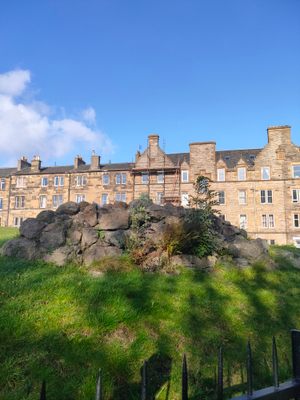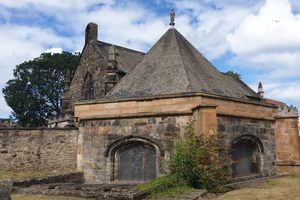About
To the untrained eye, this monument looks like a random pile of rocks. In a way, that is indeed what it is, as it’s a cairn, a landmark constructed with irregular stones. There is no signage or posting to provide historical context. Instead, one has to dig deeper to realize these stones are the marker of a sinister and unscrupulous story.
In 1720, a surgeon named Nichol Muschat lured his wife Ailie into Holyrood Park and killed her. His previous attempts to poison her, frame her for adultery, as well as asking a friend to knock her off were not successful. Muschat confessed to the crime and, according to court documents, said he killed the woman because he had simply grown weary of her.
Mushcat was hanged in the Grassmarket, a traditional place for executions in Edinburgh, and a cairn was erected in his murdered wife’s memory, though unfortunately, the guidebooks that mention the cairn fail to mention and preserve her name. The initial cairn was constructed in the traditional Scottish fashion closer to where the actual incident took place, southwest of Saint Anthony's Chapel. Over the years, people would add stones to the growing pile of rocks.
This cairn was created in the 1800s after the original one was removed. Legend says its placement made it so King George IV could view the memorial on his visit to Holyrood Palace.
Related Tags
Know Before You Go
The cairn is accessible 24/7 up a short flight of steps into the park, although it can easily be seen from street level.
It is at the far eastern edge of Holyrood Park, just past and to the left of St Margaret's Loch. Parking is available in a car park opposite (busy at weekends).
Flavors of Scotland: Beyond the Haggis
Smoked seafood, single malt whisky, and warm hospitality.
Book NowCommunity Contributors
Added By
Published
February 14, 2019




















































